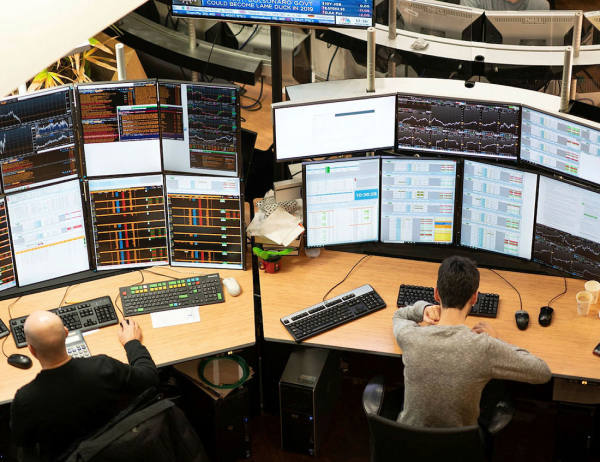- BTD worked in March
- (If you accept dip-buying’s pre-conditions)
- Lots of idea-generating content…
Buy the dip. Nestled in these three short words is a long list of assumptions and a logical appeal. A dip in price, especially if it occurs suddenly, means a stock is cheaper. If the historic arc of stock prices is gradually upward, then it makes theoretical sense to wait for dips before buying.
The logic certainly held for much of the previous decade, when dips appeared as blips in global stocks’ steady march higher.
Bravado likely played a role when, on 25 February 2020, Donald Trump described the coronavirus-induced market sell-off as a moment to buy the dip. But recent history supported the then-president’s confidence. Until then, every fall in the S&P 500 since his election had been surpassed within a year. And though the market went on to drop a further quarter after Trump’s call, his stance would be vindicated before 2020’s close.
Then there is market psychology. If the stock market is a type of voting machine, then we can be pretty sure it is prone to bouts of irrationality and fear. Dip buying implicitly prepares for this. Still, that doesn’t make it an all-purpose investing strategy.
On Wednesday, printing group De La Rue (DLAR) returned to historic form with a miserable trading update that sent the stock down by a third. But within minutes, some investors had bought the dip, despite the company warning of plunging demand for one of its core products, huge business uncertainty, and talks to amend banking covenants and delay the repair of its pension deficit.
Put simply, the fact that a stock’s price is lower does not make it a ‘dip’. Indeed, defining a dip – and what ‘buying it’ requires – is a lot less clear than the instruction implies.
A month ago, the FTSE 100 joined global equity markets in a sell-off over fears that a US regional banking crisis would lead to widespread financial contagion. In the week to 15 March, the UK’s blue-chip index fell7.4 per cent. Here was a dip. Although the bottom wouldn’t arrive for two more days, anyone who bought in will have now banked a 6.4 per cent return in under a month.
While that looks like a good trade, consider what it required. To start, the dip buyer needed to have enough cash on hand to justify a 6.4 per cent (though actually unknowable) one-month return. Then, they needed to wait for a dip to happen, hold their nerve and – with perfect timing – buy in at a moment of pronounced market volatility.
The index is up 5.7 per cent so far this year. Buying and holding, rather than standing guard in the hope that a dip would arrive, would have been simpler and less stressful.
Historic data backs this up. Over the past five years, moments in which dip buying interest has been most fevered – as reflected in worldwide Google searches for ‘buy the dip’ – have tended to be false dawns, and preceded declines in the MSCI World index on a one-, three- and six-month basis.
Longer-term evidence is even clearer. If you bought the FTSE All-Share index at any point between January 1986 and March 2018, you would have banked an average 4.3 per cent compound growth rate over the following five years. During that period, the market was in a ‘dip’ – defined as at least 10 per cent below its most recent all-time high – almost exactly half the time. The reward for only buying on these days: a 0.7 percentage point improvement in the five-year average annual return.
Holding out for deeper dips would have improved those returns further, but at an ever-greater opportunity cost: namely, most of the upside when markets were rising.
Of course, regular investors with an eye on the long term should always make use of dips when they occur. But they shouldn’t be a pre-condition for buying. Insisting prices must first fall makes intuitive sense, though only if you can also consistently ‘sell the peak’. That can’t be done, making dip buying an ultimately impractical approach to investing.





.png?source=invchron&width=600)
